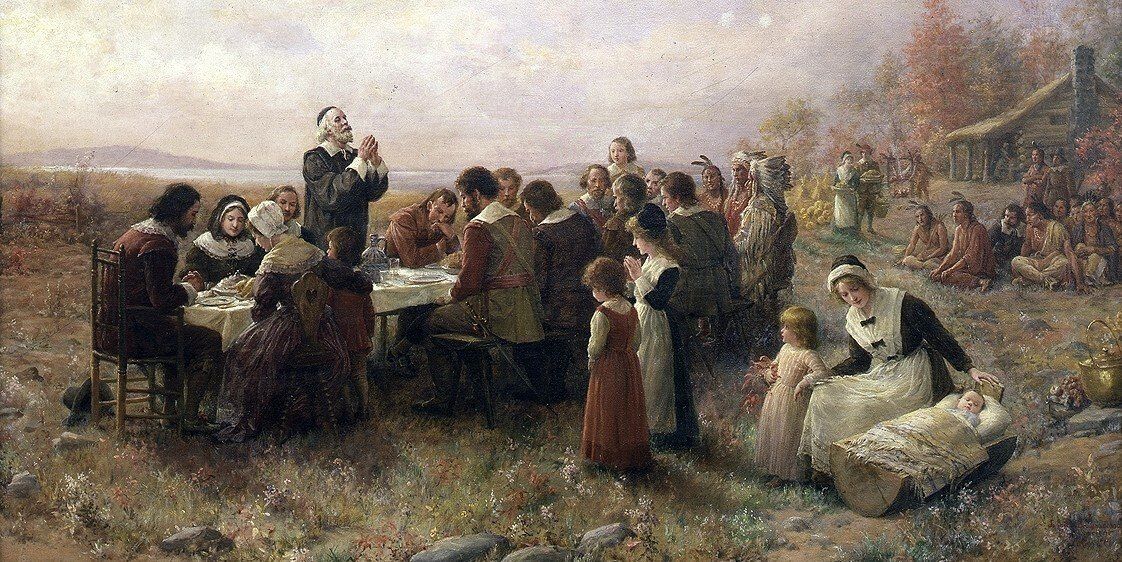Why Not Fix It?
The extra Cainan of Luke 3:36
Genesis 10:22-24, “ The sons of Shem were Elam and Asshur and Arpachshad and Lud and Aram… 24 Arpachshad became the father of Shelah; and Shelah became the father of Eber.”
Genesis 11:10-14, “ … Shem was one hundred years old, and became the father of Arpachshad… 12 Arpachshad lived thirty-five years, and became the father of Shelah… 14 Shelah lived thirty years, and became the father of Eber ”.
I Chronicles 1:18, “ Arpachshad became the father of Shelah and Shelah became the father of Eber.”
I Chronicles 1:24-25, “ Shem, Arpachshad, Shelah, 25 Eber… ”.
Luke 3:35-36, “ … the son of Eber, the son of Shelah, 36 the son of Cainan , the son of Arpachshad, the son of Shem, the son of Noah, the son of Lamech ”.
Is this a Problem?
Luke 3 contains a person in Shem’s genealogy found nowhere else in Scripture. Luke 3:36 states that Arpachshad’s son was Cainan, not Shelah (also spelled Sala) and that this Cainan (also spelled Kenan) was the father of Shelah, not Arpachshad (also spelled Arphaxad). The Old Testament genealogies never make any mention of this Cainan.
What does this mean? Is this a contradiction? Is this one of those mythical gaps old-earth believers have always hoped for to defend their rejection of the Biblical timeline of 6,000 years?
After studying this at length by examining multiple theories and some of the ancient manuscripts, I have come to the conclusion that it is a simple copyist error that was compounded by the passage of time and further manuscript reproduction.
The basis for this conclusion is the testimony regarding these three passages currently found in the available historical witnesses.
Old Testament Records
Regarding the Old Testament genealogies:
- no Hebrew manuscript ever records the Cainan mentioned in Luke 3:36,
- ancient Jewish witnesses, such as Philo and Josephus, do not mention this Cainan,
- the Septuagint versions of the 1st – 4th centuries A.D. do not appear to contain this Cainan,
- this Cainan is mentioned in neither the Samaritan Pentateuch [1] nor the Jewish Targumim. [2] , [3]
Josephus is believed to have relied upon the Greek translation of the Old Testament, called the Septuagint. He specifically states, “Sala was the son of Arphaxad: and his son was Heber; from whom they originally called the Jews Hebrews.” [4]
There is no evidence from the Old Testament records that Arpachshad ever had a son named Cainan. However, amongst those who are adamant defenders of their favorite Bible version and defend the inclusion of Cainan in Luke 3:36, one rebuttal I found stated:
Cainan may have been the firstborn son of Arphaxad who married at an early age. Cainan conceives Salah with his wife, but he dies before his son Selah is born. So Arphaxad, his father, adopts Salah and becomes his “father”. Remember, the word “beget” does not necessarily mean direct father-son relationship. Or Cainan may have married one of Arphaxad’s daughters and Salah was his son. However, in the genealogy listed in Genesis chapter 11, Arphaxad is listed as having “begotten” Salah, even though he was the grandfather. Genealogies often skip over generations, and sons are not always listed in the order in which they were born. [5]
Another Bible version apologist echoed the same basic defense:
It is perfectly understandable why the genealogy of Luke includes a name that never appeared in any Jewish genealogy, including Genesis, Chronicles and Josephus. Previous Jewish genealogies focused on biological sonship. However, the genealogy of Luke clearly focuses on sonship by adoption. Luke 3:23 says that Jesus was “the son of Joseph” despite Joseph having no biological connection to Jesus. Jesus was the adopted son of Joseph… If this pattern continues in the genealogy, it would not be surprising to find an adopted son who had previously been omitted from biological genealogies. We can reasonably accept that Cainan was the adopted son of Arphaxad, and that Cainan raised Sala, who was the biological son of Arphaxad. [6]
One potential problem for these defenses is the multiple occasions of multiple named sons throughout the Genesis genealogies. In Genesis 10, for example, Japheth has 7 sons listed, Ham has 4, Shem has 5, Cush has 6, and Mizraim has 7 sons listed. Arpachshad simply has 1 son listed.
Genesis 11:13 does say that Arpachshad had other sons and daughters. If Cainan is one of those sons, why would the Lord not have listed him somewhere in the Old Testament knowing that by not doing so it would lead to great controversy over Luke 3:36? It cannot be because only those of the Messianic line are listed. Arpachshad’s grandson Eber has 2 sons listed in Genesis 10:25, and his great-grandson Jocktan has 13 sons listed in Genesis 10:26-29! They were not all part of Jesus’ lineage.
And that’s the other thing regarding Arpachshad’s genealogy – in every single ancient translation and version of Genesis 10 & 11 and I Chronicles 1 (the Masoretic Text, Samaritan Pentateuch, Jewish Targumim, and presumably the Septuagint of the 1 st – 4 th centuries A.D.), Shelah is ALWAYS listed as the son of Arpachshad and not the son of a man named Cainan.
This means our attention must be turned towards the Luke text as the Genesis and I Chronicles texts appear to be soundly established with reliable genealogies.
What did Luke actually write?
Why does Luke list a genealogy in Luke 3:36 inconsistent with all other records? Two options present themselves: 1.) Luke purposefully listed his genealogy as recorded with a Cainan previously unknown and contradictory to Genesis and I Chronicles or 2.) the current reading of Luke 3:36 with the extra Cainan is not true to Luke’s original record. [7]
To resolve which option is most plausible, we must consult the ancient manuscripts of Luke’s Gospel. Those supporting the current reading point to Codex Vaticanus (A.D. 300-325), Codex Sinaiticus (A.D. 330-360), and Codex Alexandrinus (A.D. 400-440) amongst many others as all having the current reading of Luke 3:36. These ancient manuscripts appear to support the first option that Luke originally included the extra Cainan in his Gospel.
Could all these manuscripts be the result of a copyist error predating them?
It is certainly possible. Take a look at how the Greek texts read and how easily it would be to make this particular mistake.
TOΥΣAΡOΥΧTOΥΡAΓAΥTOΥΦAΛEΓTOΥEBEΡTOΥΣAΛA TOΥΚAINAN
TOΥAΡΦAΞAΔTOΥΣHMTOΥNΩETOΥΛAMEΧ
TOΥMAΘOΥΣAΛATOΥENΩΧTOΥIAΡEΔTOΥMAΛEΛEHΛ TOΥΚAINAN
TOΥENΩΣTOΥΣHΘTOΥAΛAMTOΥΘEOΥ [8]
Both times, the “son of Cainan” phrase appears at the end of a line of text. It is easy to see how a copyist could accidently look down and tack the phrase on the end of a line twice in the midst of so many names. Is it possible the original looked like this?
TOΥΣAΡOΥΧTOΥΡAΓAΥTOΥΦAΛEΓTOΥEBEΡTOΥΣAΛA
TOΥAΡΦAΞAΔTOΥΣHMTOΥNΩETOΥΛAMEΧ
TOΥMAΘOΥΣAΛATOΥENΩΧTOΥIAΡEΔTOΥMAΛEΛEHΛ TOΥΚAINAN
TOΥENΩΣTOΥΣHΘTOΥAΛAMTOΥΘEOΥ [8]
It is certainly possible, but the possibility of such an error does not confirm such an error. To do so, a manuscript predating these other manuscripts would need to be found that does not include the extra Cainan.
The Bodmer Papyri was discovered in Egypt in 1952. It contained 22 papyri dating to A.D. 200. [9] Large portions of the Gospel of Luke are amongst the pieces of papyri. A few fragments contain passages from Luke 3. [10] According to some scholars, the fragment containing Luke 3:34-35 indicates that the extra Cainan found in later manuscripts is not included. [11] This is possible evidence that Luke did not originally include this Cainan in his record.

Image Credit: © Biblioteca Apostolic Vaticana. Used in accordance with federal copyright (fair use doctrine) law.
Codex Bezae is a manuscript of the four Gospels and Acts written in both Greek and Latin. It dates to the A.D. 400s. It, too, does not include the extra Cainan. [12] Thus we possibly have two ancient manuscripts of Luke that agree with the Old Testament records.

Image Credit: © Cambridge University Library. Used in accordance with federal copyright (fair use doctrine) law.
Early Church Writings
Additionally, early church leaders also excluded the extra Cainan and agree with Genesis and I Chronicles. Sextus Julius Africanus, a 3 rd century A.D. Christian historian, composed his 5 volume Chronographiai around A.D. 221. Using the Septuagint version of his day, [13] he wrote, “And after the flood, Sem begat Arphaxad. Arphaxad, when 135 years old, begets Sala in the year 2397. Sala, when 130 years old, begets Heber in the year 2527.” [14]
Likewise, Christian theologian and historian Eusebius of Caesarea composed his 2 volume Chronicon around A.D. 325. He stated, “Arphaxad was the father of Shelah, who was the father of Eber”. [15] Eusebius proceeded to list the differences between the recorded ages of the Septuagint, Samaritan, and Hebrew versions of the Old Testament chronologies. In all three, Eusebius recorded them as saying, “Arphaxad fathered Shelah… Shelah fathered Eber”. [14]
This is of great significance as Josephus, Africanus, and Eusebius testify that the copies of the Septuagint from the 1 st through 4 th centuries A.D. did not include the extra Cainan. To argue otherwise is very difficult considering the oldest Septuagint copy of Genesis 10 and 11 is found in the Codex Alexandrinus dating to the mid-5 th century A.D. [16]
Conclusion
It has been shown above how a copyist error may have happened with Luke 3:36. [17] But even if this did occur, it was not a universal mistake in the 5 th century A.D., as indicated by the Codex Bezae manuscript. According to the lack of the extra Cainan in both the Bodmer Papyri (A.D. 200) and Africanus’s chronology (A.D. 220) and its inclusion in the Codex Vaticanus (A.D. 300-325), it appears the origin of the mistake can be traced to the 3 rd century A.D.
Therefore, it would not be unreasonable to simply fix it. It is used by some to claim the Bible is inconsistent and cannot be trusted. This is ludicrous as the simple copying mistake of ONE NAME validates the reliability of the Bible as the mistake can be plausibly confirmed and fixed. This is remarkable for such an ancient text!
It is used by others to validate a dubious belief that the genealogies of the Bible are incomplete and untrustworthy and, therefore, allow for the insertion of millions of years of history. This nonsensical idea is preposterous as there are no contradictory records of any kind to confirm such an irrational proposition.
The most likely reason we may never see Luke 3:36 corrected is devout allegiance to Bible versions. When Biblica released its 2011 update of the New International Version, it could have very easily corrected Luke 3:36 to reflect Luke’s original record. They, however, did not.
Rather than placing our allegiance
to a particular Bible version, let us be simply committed to the perfect, inerrant
Word of God. It alone presents to the world the love of God and the Gospel of
Jesus Christ, which is “ the power of God unto salvation
” (Romans 1:16).
[1] Genesis 10 & 11, Samaritan Pentateuch translated into English, accessed 2/5/2020, https://www.stepbible.org/?q=version=SPE|reference=Gen.10 & https://www.stepbible.org/?q=version=SPE|reference=Gen.11
[2] Genesis 10 & 11, Targum Pseudo-Jonathan translated into English, accessed 2/5/2020, http://targum.info/pj/pjgen6-11.htm
[3] Genesis 10 & 11, Targum Onkelos translated into English, accessed 2/5/2020, http://targum.info/pj/pjgen6-11.htm
[4] Antiquities of the Jews , I:6:4, translated in English, accessed 2/5/2020, https://penelope.uchicago.edu/josephus/ant-1.html
[5] Will Kinney, “Luke 3:36 Who was Cainan?”, accessed 2/5/2020, https://brandplucked.webs.com/luke336cainanlxx.htm
[6] “Should Cainan be in the genealogy in Luke 3:36?”, accessed 2/5/2020, http://www.kjvtoday.com/home/should-cainan-be-in-the-genealogy-in-luke-336
[7] A third option I have seen mentioned once is that Luke accurately referenced the pseudepigraphal work Jubilees 8:1-5. It states that Arpachshad took a wife named Rasu’eja and had a son named Kainam. Kainam married Melka and had Shelah, who then had Eber ( http://www.pseudepigrapha.com/jubilees/8.htm ). If it stated that Arpachshad had Shelah, but Shelah was raised by Kainam, it may then be plausible as Shelah would still be Arpachshad’s son and Eber his grandson. The Book of Jubilees, however, contradicts not only the Old Testament, but also its contemporaries: Josephus and the Septuagint.
[8] Jonathan Sarfati, Ph.D., F.M., “Cainan”, accessed 2/5/2020, https://creation.com/cainan-can-you-explain-the-difference-between-luke-336-and-genesis-1112
[9] Neha Patil, editor, “Bodmer Papyri”, 21 June 2018, accessed 2/6/2020, https://alchetron.com/Bodmer-Papyri
[10] Biblioteca Apostolica Vaticana digital library, Bodmer Papyri, accessd 2/6/2020, https://digi.vatlib.it/view/MSS_Pap.Hanna.1(Mater.Verbi)
[11] Jonathan Sarfati, Ph.D., F.M., “What about Cainan?”, Journal of Creation 18(2):41-43, 2004, https://creation.com/images/pdfs/tj/j18_2/j18_2_41-43.pdf
[12] University of Cambridge Digital Library, Codex Bezae, accessed 2/7/2020, https://cudl.lib.cam.ac.uk/view/MS-NN-00002-00041/373
[13] The ages of the Patriarchs in the Septuagint differ from the ages in Hebrew manuscripts.
[14] A. Cleveland Coxe, D.D., Fathers of the Third Century , Vol. IV, p. 131, http://oll-resources.s3.amazonaws.com/titles/1973/1333.06_Bk.pdf
[15] Robert Bedrosian, Eusebius’ Chronicle , “The Hebrew Chronicle”, translated from Classical Armenian, accessed 2/7/2020, https://web.archive.org/web/20120214082545/http://rbedrosian.com/euseb7.htm
[16] “Septuagint manuscripts”, Wikipedia , updated 16 December 2019, accessed 2/7/2020, https://en.wikipedia.org/wiki/Septuagint_manuscripts
[17] Another possibility is a purposeful insertion of the extra Cainan by a copyist who believed the Book of Jubilees.



